Remember Diablo 2 and its infamously stingy inventory system? Years ago, the classic RPG taught many of us how remarkably satisfying it feels when all of your loot clicks together just right. Enter Backpack Hero: a game that takes this very system and runs —nay, sprints with it.
To be clear, Backpack Hero isn’t the first attempt to make a game out of loot packing. The Save Room games, for example, turn Resident Evil 4’s inventory system into a standalone puzzler. What, Backpack Hero does, instead, is interpret this concept as a full-fledged, deckbuilding roguelite. The result is surprisingly engaging, even if some of the game’s supplementary systems don’t quite stick the landing.
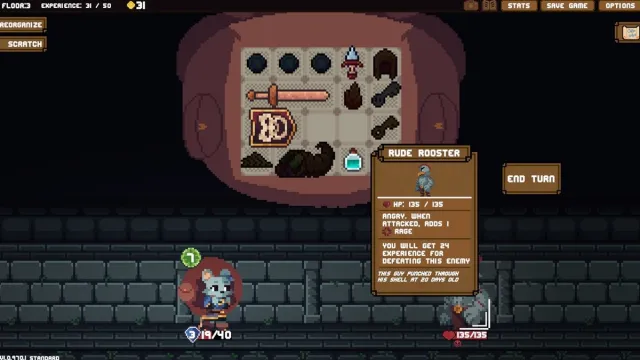
Backpack Hero (PC [Reviewed], Switch)
Developer: Jaspel
Publisher: Different Tales, IndieArk
Released: November 14, 2023
MSRP: $19.99
Granted, calling Backpack Hero a deckbuilder is slightly misleading. Here, items you find along the way are your deck, and your playing mat is the very backpack you’re lugging around. As you crawl through the game’s dungeons and engage in turn-based combat, the uppermost portion of the interface always shows your inventory. You attack, cast spells, and generally interact with the dungeon by activating items: swords, shields, gems, potions, and so on.
The catch is that most items require very specific placement and rotation in your inventory. Better yet, many of them must be arranged in a way relative to certain other items for them to work properly. And, since you’re getting new stuff basically all the time, Backpack Hero keeps you on your toes by forcing you to reinvent your inventory between encounters and loot drops.
Roguelikes and roguelites often force players to switch up strategies as they play, but Backpack Hero takes things a step further with its sheer variety of item effects. Only rarely is a sword just a sword. Instead, it may only work if stored diagonally, or heavily incentivize lugging some cursed auxiliary items around. Is it worth carrying around, then? That’s a choice you’ll have to make often in Backpack Hero. Acquiring a new piece of loot demands you seriously consider your item management. It’s engrossing and satisfying.
For example, look no further than how Backpack Hero handles armor. Helmets are shoved in the topmost rows of your pack to be effective, while boots should go at the bottom. Add extra complexities, such as diagonal buff application and adjacency bonuses, and you’ve got a heck of a puzzle on your hand with every new encounter.
Meanwhile, certain magical items might only work if there aren’t any items immediately adjacent. Others might be lighter than air and automatically float to the top of your bag. Since there aren’t any item slots to be concerned about, your efficiency in combat boils down to personal ingenuity and inventiveness. Look, if you want to fill up your backpack with three different suits of armor, that’s a choice Backpack Hero permits. You do you.
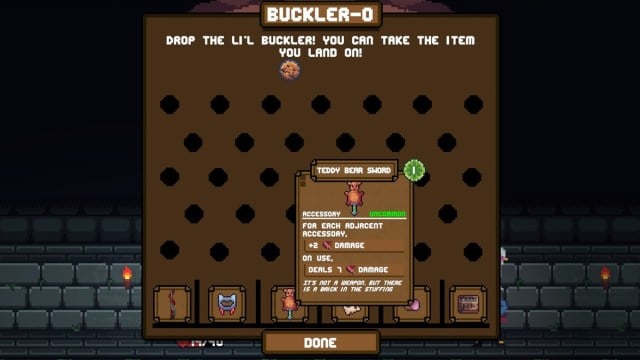
In this sense, Backpack Hero is sublime. Every run is its own puzzle, with enough pieces in play to encourage optimization on your own terms. Synergy is the word of the day here, and discovering the optimal item placements, rotations, and correlations is a delight. Not only do you get to embody the proverbial loot goblin, but you also get to feel smart about it!
As with many other indie darlings, however, Backpack Hero has its own take on a vast, all-encompassing meta progression system. To keep you busy between dungeon runs, you’ll manage an entire downtrodden town: Haversack Hill. Shops, schools, libraries, houses… It’s all reminiscent of the old PlayStation classic Dark Cloud.
Unfortunately, interacting with Haversack Hill’s denizens kills the brisk, satisfying pace of the core itemized dungeon crawling. One moment, you’ll be micromanaging your backpack to crowd control an entire gauntlet’s worth of enemies. Then, seconds later, you’re looking for roaming NPCs in Haversack Hill to tell them you’ve got that sweet stack of bricks they’ve been looking for. This disparity could work in the game’s favor to balance out tense combat encounters, certainly, but improvements to Haversack Hill were too dull for this to work.
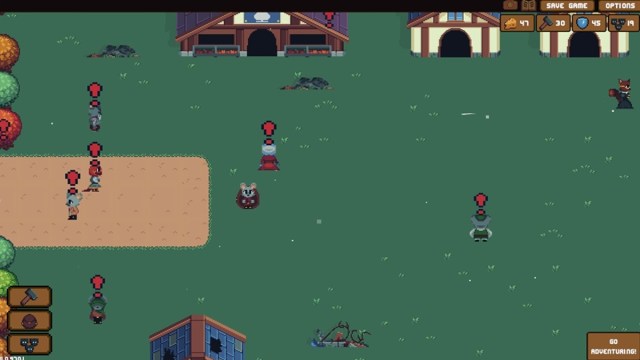
The central narrative isn’t particularly good, and there aren’t any interesting characters or functionalities to fiddle around with during the townscape portions. Haversack Hill just doesn’t add much value to Backpack Hero’s already strong dungeon gameplay— it’s more mundane busywork. Instead of looking forward to upgrades and unlocks you’d typically see in similar roguelikes, I just wanted to get back to dungeon crawling as soon as possible.
Haversack Hill does, inadvertently, offer one bright spot. The town itself is pure drudgery, but collecting resources for its progression is much more interesting. To establish new services and invite more NPCs, you collect unique resources in the dungeon. Naturally, gathering these is a balancing act in and of itself. The only way to lug around bricks, wood beams, and other building materials is to sacrifice room in your inventory which, in effect, means leaving optimal combat performance on the table.
I really enjoyed the risk vs reward tradeoff of this system, as it adds more puzzle elements to an already intricate dungeon crawler. Had Backpack Hero focused the township parts to their absolute basics, perhaps even reducing it down to a sleek UI, I could see myself playing it for hours on end. As is, though, I couldn’t stomach more than one round of town management per session.
That said, Backpack Hero comes with a dedicated Quick Game mode. Here, you’re free to choose whichever character you want, all of them pre-unlocked for your playing pleasure. I actually found this to be the best way to play the game: unrestrained from any townscape homework. Just you, your ingenuity, and a virtually infinite pool of delightfully weird magical items to choose from.
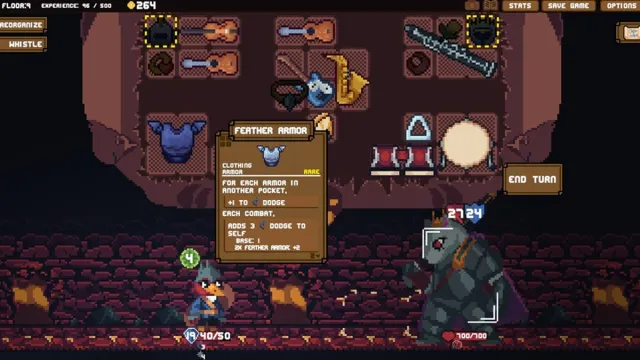
The obvious downside, though, is that you’re losing the main story mode’s sense of progression. By building up Haversack Hill, more regions of the dungeon open up, unlocking new goodies and passive bonuses in turn. It’s nice to skip the town segments via Quick Game mode, but you’ll, in turn, sacrifice the intrigue of collecting resources and learning item synergies through the drip feed of unlocks. I still preferred playing via Quick Game at the end of the day, I just wish I could enjoy the best of both worlds.
Ultimately, Backpack Hero specifically lets you side-step its biggest fault — it’s a thoughtful step that gets my praises. I’d go so far as to say the core gameplay is more than compelling enough to forget whatever other perceived problems there may be. It’s delightfully infectious, calling me back for the same reasons the legendary Slay the Spire did.
Despite floundering a bit with meta-progression mechanics, Backpack Hero is still a thoroughly entertaining deckbuilding roguelike. Its use of item management as a central game mechanic is wildly inventive, and I consistently wanted to reenter the dungeon just to explore new item synergies. I do wish the town sections didn’t drag the pace of the main campaign as much as they did. But even if you strictly use the Quick Game mode, Backpack Hero is still a worthwhile venture.
[This review is based on a retail build of the game provided by the publisher.]

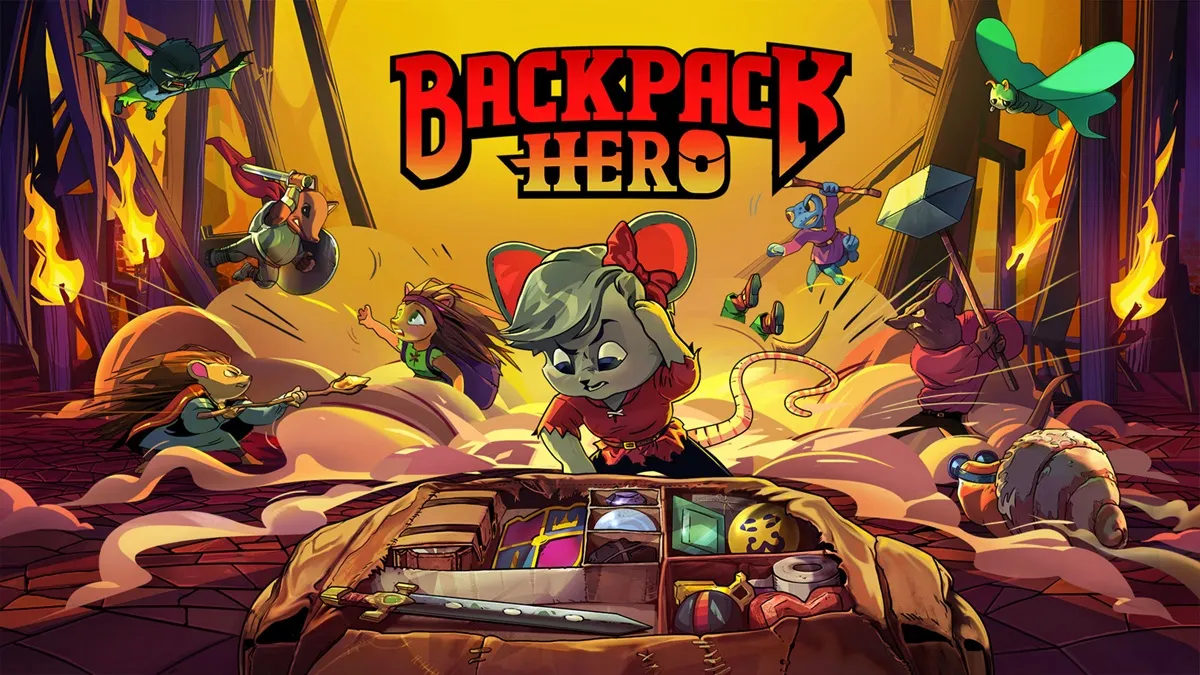




Published: Jan 24, 2024 02:15 pm